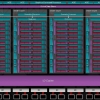AMD FreeSync vs Nvidia G-Sync, Ultimate Verdict.
-
Topics
-
skayqz ·
Posted in Graphics Cards5 -
0
-
1
-
Ricodotsh ·
Posted in New Builds and Planning5 -
2
-
diamondx12 ·
Posted in Networking3 -
Deni_I ·
Posted in Storage Devices6 -
1
-
1
-
Krewtoxin ·
Posted in Laptops and Pre-Built Systems4
-


.png.255947720031a641abdac78e663b681c.png)














Create an account or sign in to comment
You need to be a member in order to leave a comment
Create an account
Sign up for a new account in our community. It's easy!
Register a new accountSign in
Already have an account? Sign in here.
Sign In Now